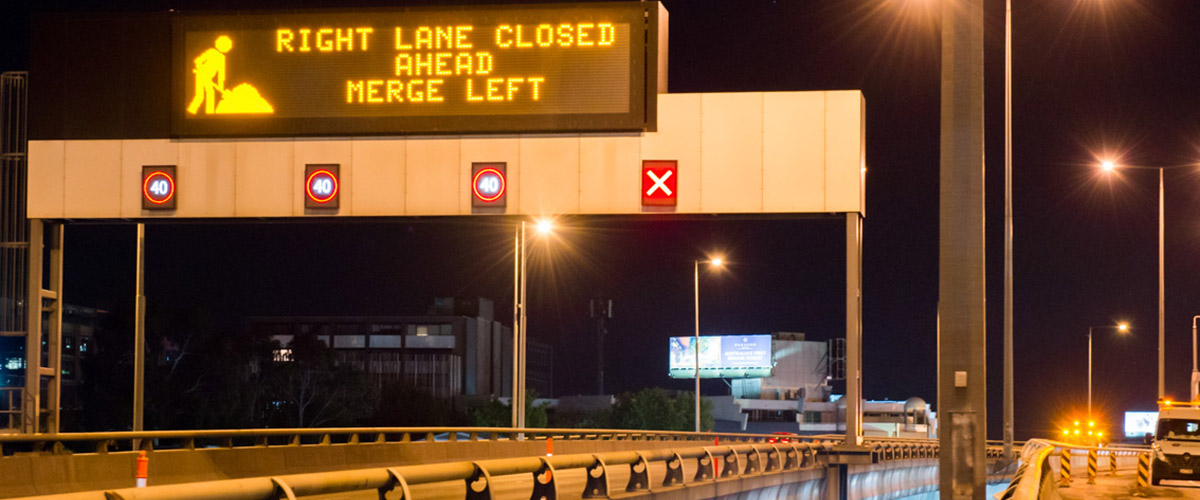We surveyed 5,000 Australian and North American drivers to understand their driving behaviours that impact road safety. What we found shows more education is needed on all four driving behaviours we explored. We also found that drivers don’t always realise they’re getting safety wrong.
The survey’s detailed findings are available in our Transurban Insights: Road Safety report, a new research series sharing data on pressing road transport issues.
Here’s a summary of what we found.
Driving near emergency vehicles
An average 12% of respondents (Melbourne, Sydney and Brisbane) say they never slow down or do not always slow down to the required speed limit when driving past emergency service vehicles. In Victoria and New South Wales drivers must slow down to 40km/h when passing stationary enforcement or emergency vehicles with flashing lights. In Queensland, drivers must ‘move over, slow down’—meaning slowing to pass at a safe speed or changing lanes.
Driving through roadworks
We asked if people slow down to the posted speed limit when driving through roadworks and most (more than 70%) of respondents say they do slow down. But data from our own roadworks suggests otherwise. When we audited driver behaviour during roadworks on the CityLink / Tullamarine Freeway in Melbourne, we found driver’s average speeds were 10-15km above the posted speed limit along the whole length of the road works area.
Driving near heavy vehicles
Feelings of safety when driving around heavy vehicles is mixed, with a similar number of respondents feeling safe as there are who feel unsafe.
Whatever we feel about driving near heavy vehicles, most of us have more to learn about driving safely near these vehicles. Very few (4% Australia, 1% Greater Washington Area, 3% Montreal) could correctly identify all truck blind spots. Most (81% Australia, 78% Greater Washington Area and 73% Montreal) could identify one blind spot correctly.
Travelling safely with children
Child car seats can be tricky to install correctly, and the consequences of an incorrectly fitted seat can be serious. Concerningly, we found 61% of Australian respondents with a child car seat in their cars installed the seat themselves. In both the Greater Washington Area and Montreal, this number was higher: 74% respondents self-installed their seats.
Most (72%) of our Australian survey respondents with kids at home said they are compliant with the Five Step Test, which is set out in the National Child Restraint Guidelines to help people determine when it’s safe for children to make the shift from a child car seat to adult seat belt. But when we asked people to identify the Five Step Test a different picture emerged. More than half, 53% could identify at least one guideline—but only 3% knew all five.
Further, 18% of respondents say they allow children ride in the front seat before it is safe. We are working with Kidsafe across Australia to educate our customers about how to assess whether a child is ready to travel using an adult seat belt.
We will use these insights to inform future customer and community road safety campaigns.
Read the full report here: Transurban Insights: Road Safety

